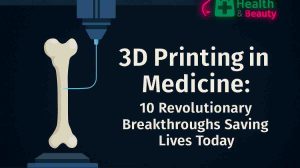For dog owners, few words are as frightening as “your dog has cancer.” Yet, with early detection and care, many dogs can live longer, happier lives. Recognizing the subtle signs of cancer in dogs — before they become severe — can make all the difference. Here’s how to identify symptoms early, understand risk factors, and take the right action for your furry companion.
How to Recognize Cancer in Dogs
🐾 1. Watch for Unusual Lumps or Skin Changes
Lumps under the skin, sores that don’t heal, or rapid growths are common indicators of cancer.
Run your fingers along your dog’s neck, chest, and belly once a week. If you notice any hard or painful bumps, schedule a veterinary visit immediately.
According to the American Veterinary Medical Association (AVMA), early examination significantly improves treatment success rates.
😬 2. Check the Mouth and Breath
Oral cancer often hides in the gums or tongue. Look for:
- Unusual bleeding
- Bad breath that persists
- Difficulty chewing or swallowing
If your dog avoids hard food or drools excessively, ask your vet to perform a mouth exam. Oral tumors grow fast and are easier to treat if found early.
🐕 3. Persistent Cough or Breathing Issues
A chronic cough, even without infection or smoke exposure, may point to lung or chest tumors.
If your dog’s cough persists for more than a week despite rest or medication, your vet may recommend an X-ray or chest ultrasound to rule out cancer.
😔 4. Behavior and Mood Changes
Dogs often hide pain, but you can detect it through subtle changes:
- Becoming withdrawn or irritable
- Sleeping more than usual
- Refusing to play or go for walks
These behavioral shifts, especially in older dogs, might signal discomfort from an internal tumor or organ pain.
⚖️ 5. Weight Loss Without Diet Changes
Sudden weight loss, reduced appetite, or vomiting can indicate cancer-related metabolic issues.
Ensure your dog eats consistent, high-quality food such as Royal Canin Veterinary Diet or other vet-approved formulas.
If your dog maintains appetite but still loses weight, seek bloodwork and imaging tests.
🩸 6. Unexplained Bleeding or Discharge
Bleeding from the nose, mouth, or rectum — without visible injury — can suggest internal cancer.
If bleeding doesn’t stop or recurs often, bring your dog to the clinic immediately. Delay may allow cancer to progress.
💡 Prevention & Early Care Tips
While not all cancers can be prevented, you can reduce risk by:
- Maintaining a healthy diet and weight
- Regular vet checkups (every 6–12 months)
- Limiting exposure to pesticides or secondhand smoke
- Spaying or neutering early, which may lower cancer risk
💬 Expert Tip: “Routine wellness exams and early detection tests can save lives,” says Dr. Lisa White, DVM from PetMD.
❓ FAQ
Q: Are certain breeds more prone to cancer?
Yes, breeds like Golden Retrievers, Boxers, and Rottweilers are genetically more susceptible.
Q: Can diet affect a dog’s cancer risk?
A balanced, antioxidant-rich diet supports immune health and may reduce risk factors.
Q: What’s the average survival rate for dogs with cancer?
It varies by type, but early-stage cancers often respond well to surgery or chemotherapy.
Bottom Line
Cancer in dogs is heartbreaking — but it doesn’t have to mean the end. With awareness, early diagnosis, and veterinary care, many dogs can recover or enjoy longer lives. Your love, attention, and quick response truly make the difference.







